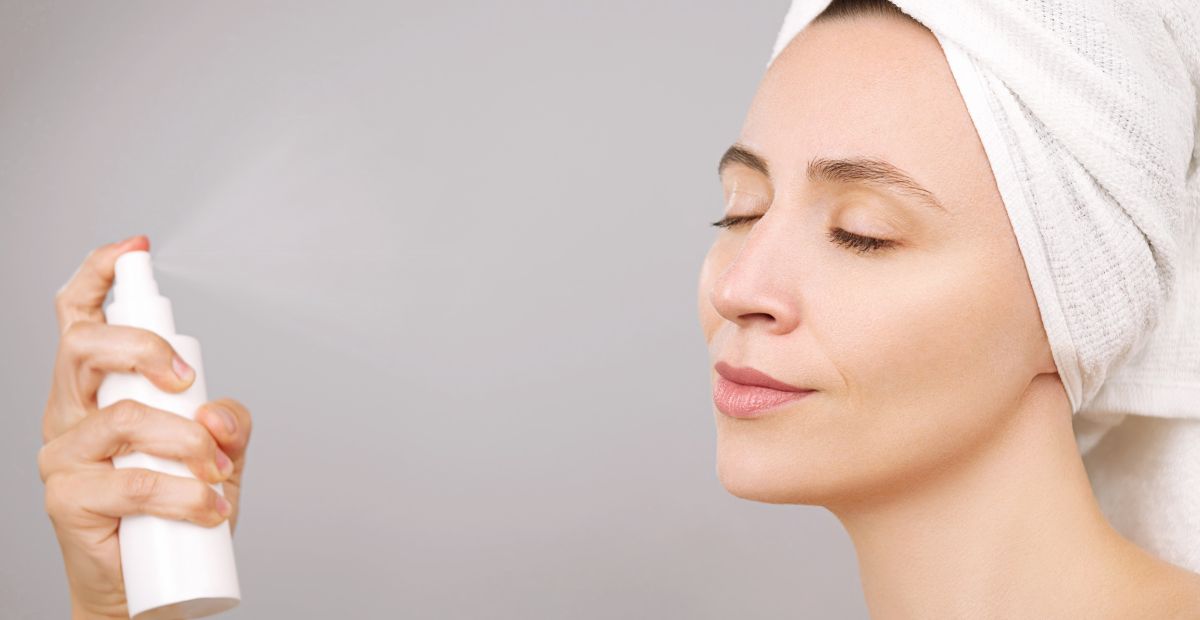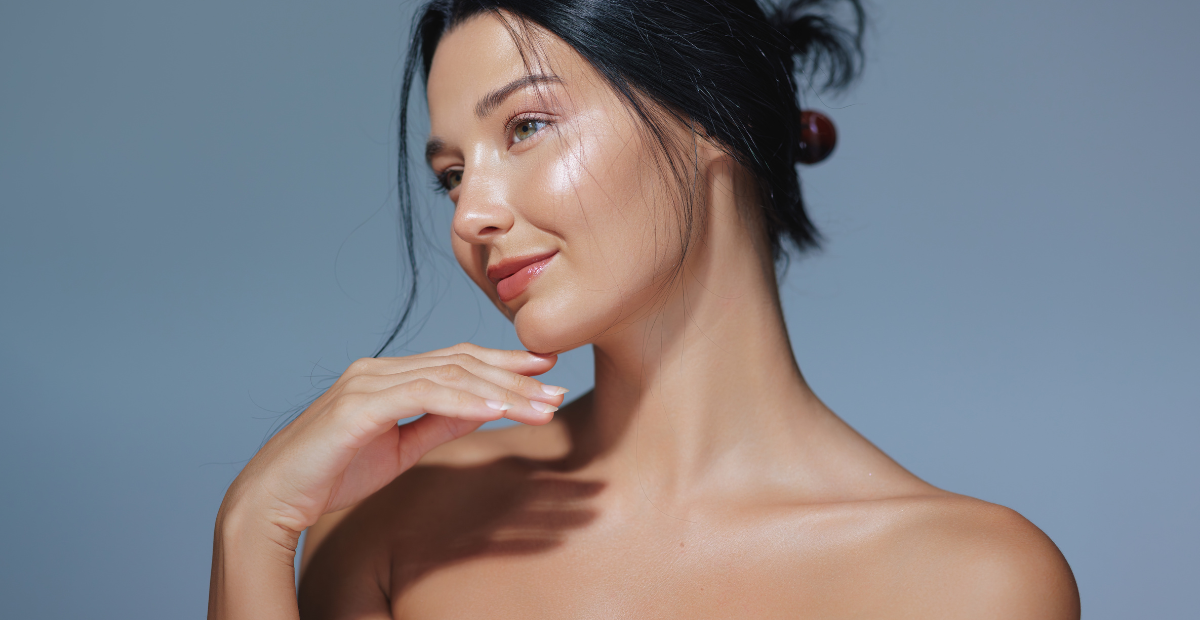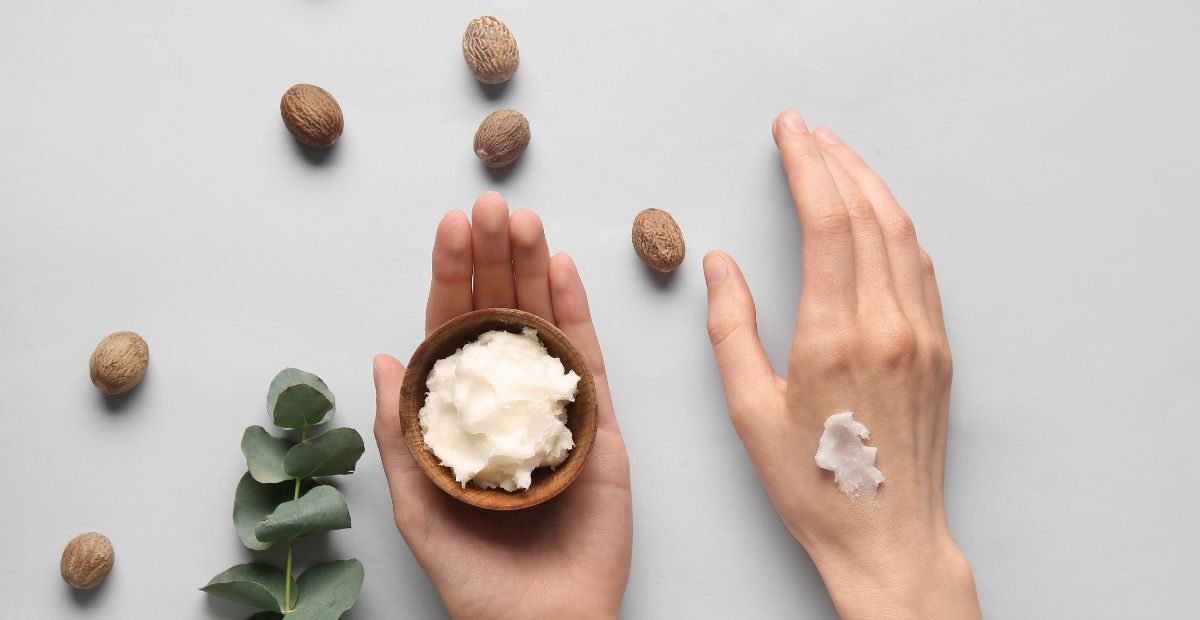Top-5 Benefits of Probiotics for Your Skin
Onskin Content Team
Your guides through the skincare chaos

Probiotics in skincare are gaining popularity for their ability to strengthen the skin barrier, fight acne, reduce sensitivity, and even slow down signs of aging. But how exactly do they work, and what should you look for in probiotic skincare products? Let’s find it out!
What Do Probiotics For Skin Mean?
Probiotics are a combination of living beneficial bacteria and/or yeast that exist in your body. They help maintain overall health, support proper bodily functions, and fight against harmful bacteria when their levels become too high.
However, such factors as stress, diseases, bad habits, changes in skin pH, and an unbalanced diet can disrupt this balance and lead to skin issues. Skincare products with probiotics can help restore the balance and strengthen the skin barrier. An improved barrier, in its turn, helps reduce symptoms of skin diseases.
Common probiotics used in skincare include Lactococcus, Lactobacillus, Saccharomyces, Bifida, and Streptococcus thermophilus.
Probiotics Benefits for Skin
Well, we already know about the general connection between probiotics and skin’s defensive barrier. Now, let’s look into the topic.
Probiotics help treat acne.
A study has found that using a cream with a lactic bacteria called Streptococcus thermophilus helps the skin produce more ceramides when applied topically. It’s essential because ceramides keep moisture inside the skin, which helps it stay hydrated, and certain ceramide sphingolipids (a type of ceramides) also fight Cutibacterium acnes, the bacteria linked to acne.
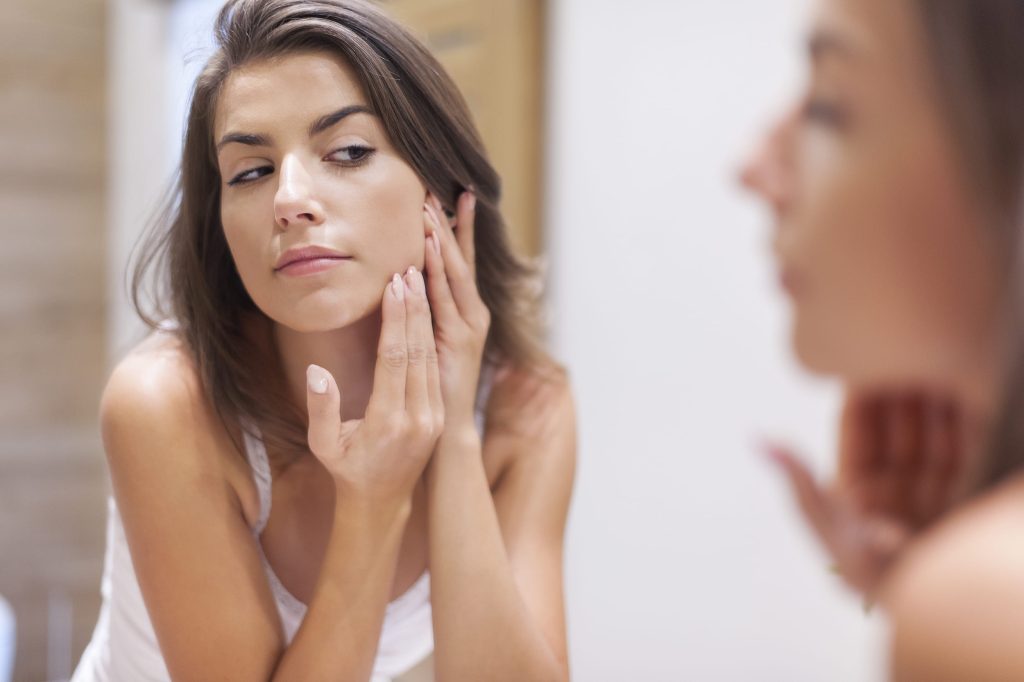
By the way, if you’d like to learn more about ceramides and why they are called wonder ingredients for your skin, check out our guide here.
They possess antiaging properties.
According to studies on skin physiology and aging mechanisms, the antiaging effect is possible due to the fact that probiotics improve hydration, restore the skin’s barrier function, replenish collagen and elastin in the body, and contain antioxidants.
Probiotics help those with reactive skin.
As part of another scientific experiment, volunteers applied a cream containing Bifidobacterium longum lysate to reactive skin. Those who used this probiotic cream experienced a significant decrease in skin sensitivity by the end of the treatment. Their skin also became more resilient to physical and chemical irritants compared to the volunteers that applied the control cream.
But here’s the thing. If you don’t want to plunge into the bottomless world of bacteria and other skincare ingredients, you can simply use the OnSkin app. It’ll analyze the product’s formula and tell you whether it works well for you, based on your current skin condition. The only thing you have to do is to scan the barcode of the product or take a snap of the packaging. The app will do the rest.
They can even skin tone and reduce pigmentation.
Lipoteichoic acid extracted from Lactiplantibacillus plantarum bacteria can treat melanosis (the darkening of the skin caused by the overproduction of melanin) and is used as a whitening agent for skin.
Probiotics help with atopic dermatitis.
Atopic dermatitis is often caused by changes in the diversity of microorganisms. A good number of studies show that probiotics help improve skin condition and reduce the symptoms of this disease.
The use of a bacteria called Streptococcus thermophilus significantly increases the levels of ceramides in the corneous layer, which improves the skin’s protective layer.
An emollient containing Lactobacillus bacteria has been shown to neutralize the spread of a harmful bacteria called Staphylococcus aureus, create mechanical barrier, and reduce unpleasant symptoms of atopic dermatitis
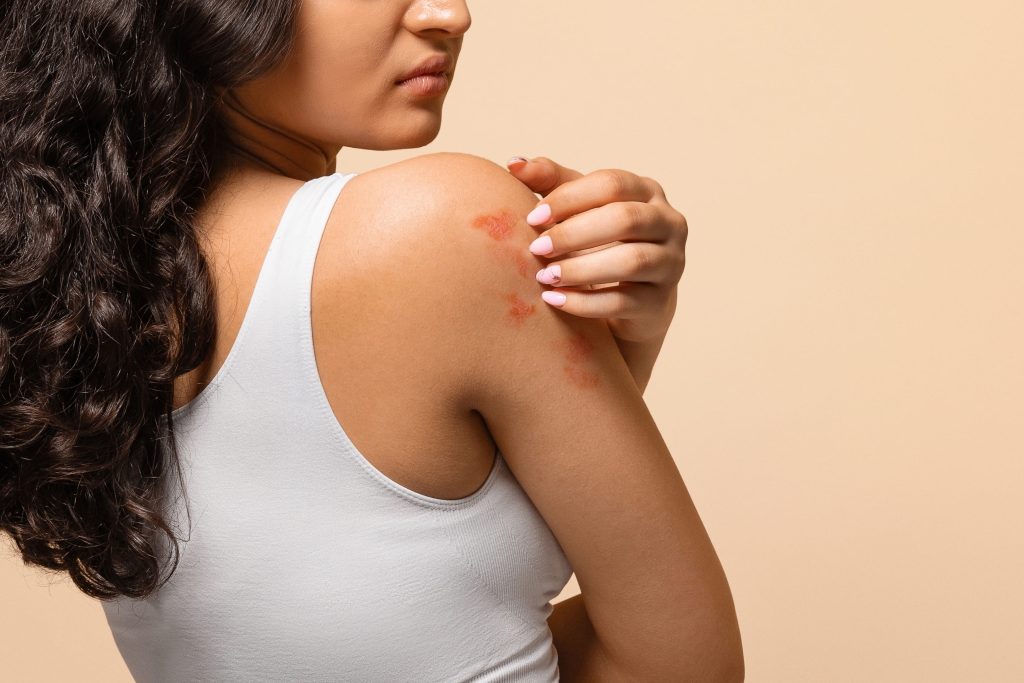
Where to Find Probiotics for Skin
Practically any skincare product can contain probiotics. However, leave-in products like creams and serums usually have the most noticeable impact. The same goes for products with active ingredients that help you deal with specific skin concerns.
At the same time, there are some peculiarities to be aware of. The production process of skincare products is quite lengthy, so it’s a tricky task to create a product in which probiotic bacteria remain viable all the way down. The thing is, moisture helps dried organisms hydrate. According to research, after hydration, there are two scenarios: the organisms can either multiply or die. That’s why oil based formulas are needed for such creams. However, the question is how easily the organisms can come out of the oil after application to the skin and be effective.
Moreover, many creams are made in environments that can’t be honestly called completely germ-free, so preservatives can be added that inhibit the growth of bacteria or kill them entirely. These preservatives can sometimes harm the probiotics in the cream and make them less effective.
So, even if you see probiotics on the product label, it’s impossible to know if the microbes are alive. Moreover, in the experiments we’ve mentioned, the percentage of probiotics is usually specified. But in the skincare industry, manufacturers usually don’t include this information on the label. For sure, it doesn’t mean the product is ineffective—many manufacturers lead clinical trials to test and prove a products’ effectiveness.
How to Apply Products Containing Probiotics
The best advice is to view your skincare routine as a balanced whole. If you rely just on a probiotic product, you might be dissatisfied with the result. For instance, if your skin is very dry and dehydrated, and you use a probiotic cream alongside a cleansing product that contains a high amount of sulfates, there’ll be no effect. The reason is that probiotics help restore the skin barrier, while sulfates weaken it. The same applies to harsh alcohols, certain preservatives, and other ingredients that can break the skin’s protective layer. That’s why it’s best not to mix probiotic-containing products with those that include aggressive ingredients like sulfates or alcohol.
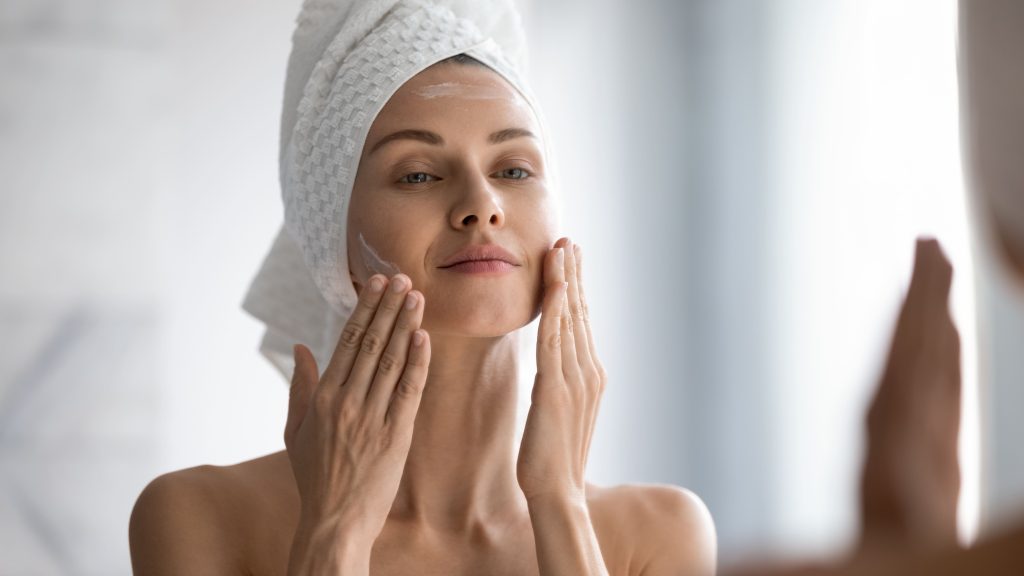
Another tip is to check the position of probiotics in the ingredient list. If they appear near the end, the effect may be minimal.
Here’s one more trick. Probiotics work more effectively when used together with prebiotics. Prebiotic ingredients support the growth and activity of beneficial microbes on the skin.
Last but not least, it’s always better to apply leave-in products. They stay on the skin longer and have more time to deliver their benefits.
When to Expect the Best Results
We can’t say there are any specific instructions or recommendations for the best fit of the product. In general, if the product works well for you, doesn’t clog pores, or dry out your skin, it usually takes around three to four weeks for the skin to adapt to it. However, everything depends on the product’s formula and your skin’s condition here and now.
Just a quick reminder. With the OnSkin ingredient checker app, you can easily scan your skincare products and get a detailed breakdown of the ingredients. The app will tell you exactly what’s in your products and how they may affect your skin, helping you determine if they’re safe and suitable based on your unique skin type and concerns.
- Effect of the lactic acid bacterium Streptococcus thermophilus on stratum corneum ceramide levels and signs and symptoms of atopic dermatitis patients. (2003). https://pubmed.ncbi.nlm.nih.gov/14705802/
- Applications of probiotic constituents in cosmetics. (2023). https://www.mdpi.com/1420-3049/28/19/6765
- Bifidobacterium longum lysate, a new ingredient for reactive skin. (2010). https://pubmed.ncbi.nlm.nih.gov/19624730/
- Increase of skin-ceramide levels in aged subjects following a short-term topical application of bacterial Sphingomyelinase from Streptococcus Thermophilus. (2008). https://journals.sagepub.com/doi/10.1177/039463200802100115
- Effect of emollients containing vegetable-derived lactobacillus in the treatment of atopic dermatitis symptoms: split-body clinical trial. (2014). https://pubmed.ncbi.nlm.nih.gov/24882967/
- Probiotics in cosmetic and personal care products: trends and challenges. (2021). https://pmc.ncbi.nlm.nih.gov/articles/PMC7956298/
FAQ
-
Where do I start with OnSkin?
Download the app and think of a product you’d like to know more about. Then, go to the main screen and choose how you’d like to get the info —by manually looking it up in the search bar, by scanning its barcode, or by simply taking a picture of the packaging. Once you’ve done any of these, you can see how safe the product is and if it suits your skin or hair (if this analysis is available).
-
What is Safety Rating, and how is it calculated?
In OnSkin, we base product rates on ingredients. Each is closely studied by our medical team and then evaluated. This way, each product gets a score from 0 to 100, with 100 as the safest level.
Safety Levels
- Excellent (76–100)
- Good (51–75)
- Not great (26–50)
- Bad (0–25)
These scores are backed by the latest scientific studies. You can find links to the resources we’ve used on each ingredient page. To assess the safety of product ingredients, we evaluate them according to the following parameters/criteria
- Endocrine disruption risk / Reproductive toxicity
Indicates the probability of mimicking, blocking, or interfering with the body hormones.
- Сarcinogenicity
Measures the potential risk of inducing cancer.
- Allergy risk
Estimates the probability of an allergic reaction.
- High concentration alert
Determines the risk of being unsafe in certain amounts.
-
What is Skin Match?
Based on the info you input about your skin type, age, skin care goal, and other “settings,” OnSkin checks how well a product is tailored to your unique skin needs — it’s basically like a dermatologist helping you find the right products, minus the fees and the long wait. The product you’re checking might be labeled as It’s a match!, Hit-or-miss, or Not a match for you. The app also detects ingredient groups such as Anti-acne, Anti-inflammatory, Moisturizes, May be drying, Comedogenic, and others — by tapping one, you see exactly what ingredients from this or that group are in the product.
-
I seem to have a problem with using the app. Who should I contact?
Please reach out to us at [email protected], and we’ll carefully look into your issue. Your ideas for improving the app are also very welcome!
-
Do you have an Android version?
Not yet! Hey Android users, we hear you, and we're thinking about making an Android version, but we haven't started the development yet.
Tracker Sent!
It’s on the way to your inbox.


